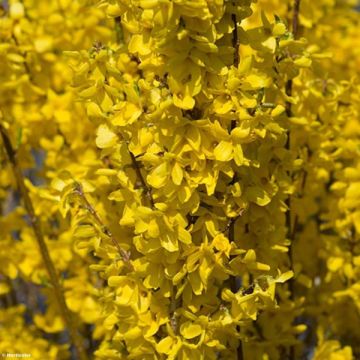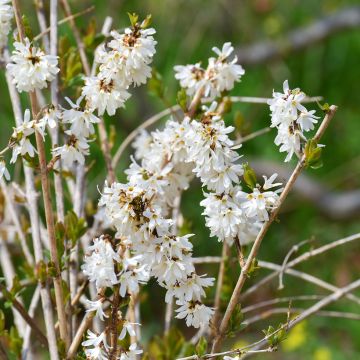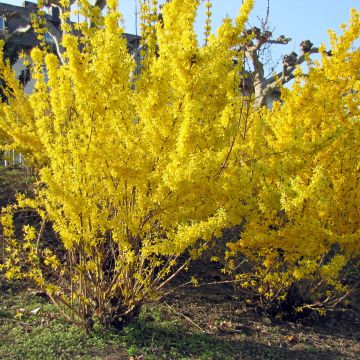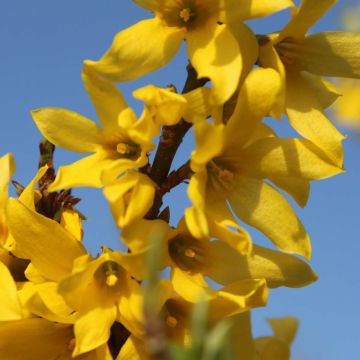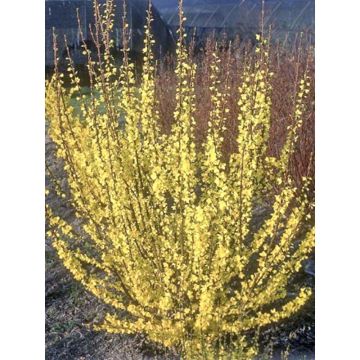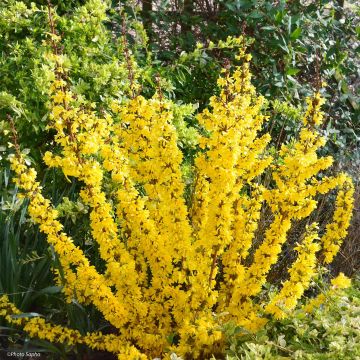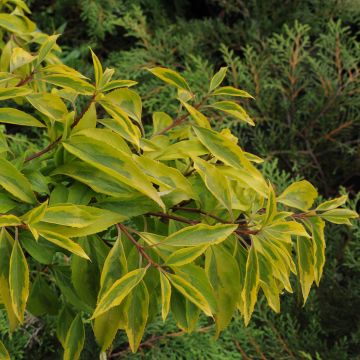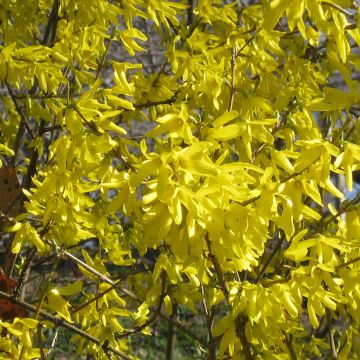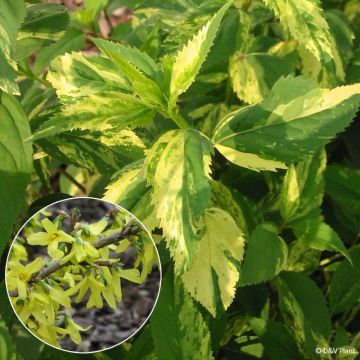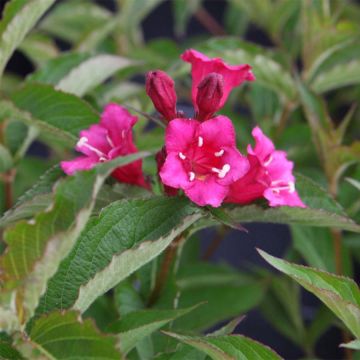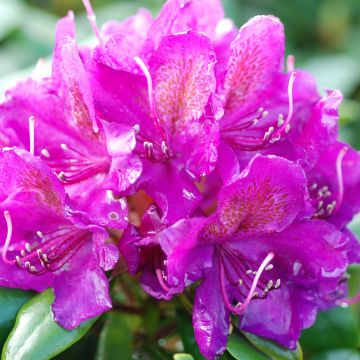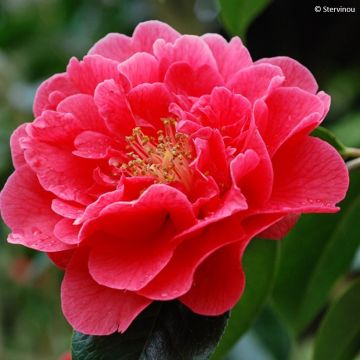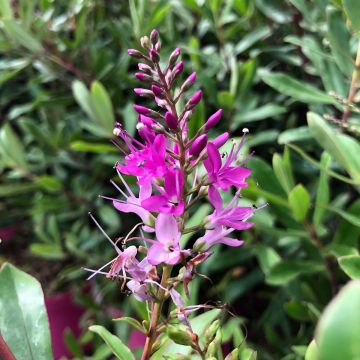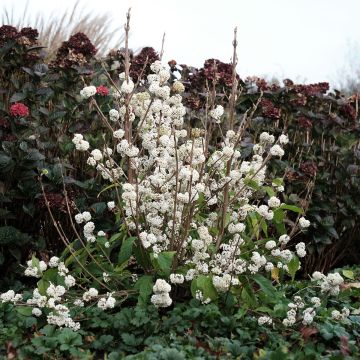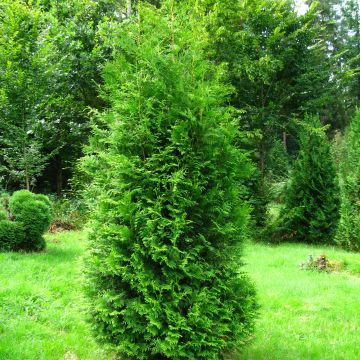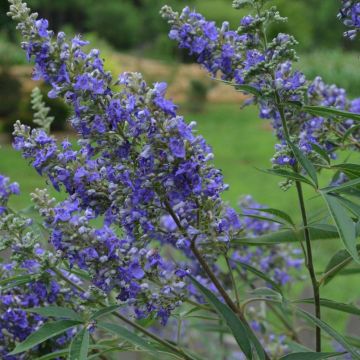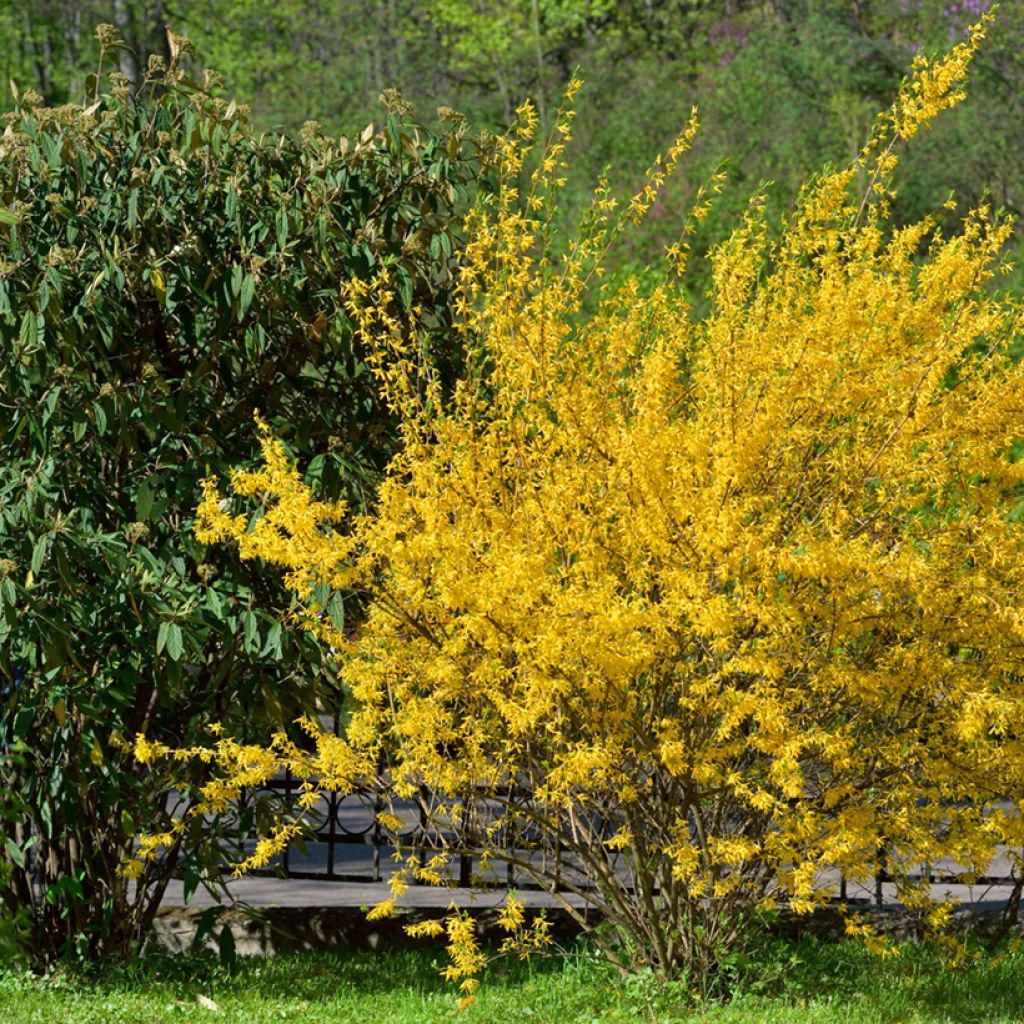

Forsythia x intermedia Forbeesia
Forsythia x intermedia Forbeesia
Forsythia x intermedia Forbeesia
This item cannot be shipped to the selected country
Delivery charge from €5.90
More information
Schedule delivery date,
and select date in basket
This plant carries a 24 months recovery warranty
More information
We guarantee the quality of our plants for a full growing cycle, and will replace at our expense any plant that fails to recover under normal climatic and planting conditions.
From €5.90 for pickup delivery and €6.90 for home delivery
Express home delivery from €8.90.
Does this plant fit my garden?
Set up your Plantfit profile →
Description
The Forsythia x intermedia 'Forbeesia' is a deciduous bush remarkable for its early, abundant, nectar-rich and pollen-rich flowering. This melliferous plant, which blooms as early as March, is particularly beneficial for bees and other pollinating insects at the beginning of the season. Versatile and easy to maintain, this forsythia is ideal for bringing life to the garden or terrace. Hardy and undemanding, it forms a large, radiant bush that has its place in a small flowering hedge. Wonderful in the garden, its flowering will also be very beautiful in vases in winter or spring bouquets.
The Forsythia intermedia 'Forbeesia' belongs to the Oleaceae family. This cultivar is the result of a cross-breeding carried out by Heinje Baumschulen nursery in Germany. The bush generally reaches 3 to 4 m in height and about 2 to 3 m in width. Its habit is upright, spreading and loose, and its growth is rapid. Its bell-shaped flowers, of a brilliant golden yellow, appear from March to May and emit a sweet fragrance. In autumn, its foliage turns yellow-orange, adding a touch of colour to the garden. This deciduous foliage is absent in winter.
This 'Forbeesia' Forsythia is perfectly hardy, undemanding and very easy to maintain, it grows in any type of sufficiently deep soil and under most of our climates. This beautiful bush lends itself to various uses: in a flowerbed, in a free hedge, or in a container on a terrace. Its flowering branches are also very decorative in a vase. At its base, you can plant botanical tulips or early single tulips in a mix, daffodils, hyacinths or primroses. Among the bushes that can accompany it, Japanese quince (Chaenomeles), early white broom (Cytisus praecox 'Albus') and kerrias (Kerria) take pride of place. These combinations allow for the creation of harmonious and ecologically beneficial scenes, attracting and nourishing pollinating insects from the beginning of spring.
Report an error about the product description
Plant habit
Flowering
Foliage
Botanical data
Forsythia
x intermedia
Forbeesia
Oleaceae
Cultivar or hybrid
Other Forsythia
Planting and care
The Forsythia intermedia 'Forbeesia' enjoys a sunny exposure, but tolerates partial shade (especially in our hottest and sunniest regions). Place it in any ordinary soil, even clay or limestone, deep enough and loosened, enriched with compost at planting. After flowering, you can optionally remove half or two-thirds of the height of the flowering branches to rejuvenate the bush and ensure a quality flowering the following spring. During the first 3 years, simply cleaning dead, thin or misplaced stems will be enough.
Planting period
Intended location
Care
This item has not been reviewed yet - be the first to leave a review about it.
Hedge shrubs
Haven't found what you were looking for?
Hardiness is the lowest winter temperature a plant can endure without suffering serious damage or even dying. However, hardiness is affected by location (a sheltered area, such as a patio), protection (winter cover) and soil type (hardiness is improved by well-drained soil).

Photo Sharing Terms & Conditions
In order to encourage gardeners to interact and share their experiences, Promesse de fleurs offers various media enabling content to be uploaded onto its Site - in particular via the ‘Photo sharing’ module.
The User agrees to refrain from:
- Posting any content that is illegal, prejudicial, insulting, racist, inciteful to hatred, revisionist, contrary to public decency, that infringes on privacy or on the privacy rights of third parties, in particular the publicity rights of persons and goods, intellectual property rights, or the right to privacy.
- Submitting content on behalf of a third party;
- Impersonate the identity of a third party and/or publish any personal information about a third party;
In general, the User undertakes to refrain from any unethical behaviour.
All Content (in particular text, comments, files, images, photos, videos, creative works, etc.), which may be subject to property or intellectual property rights, image or other private rights, shall remain the property of the User, subject to the limited rights granted by the terms of the licence granted by Promesse de fleurs as stated below. Users are at liberty to publish or not to publish such Content on the Site, notably via the ‘Photo Sharing’ facility, and accept that this Content shall be made public and freely accessible, notably on the Internet.
Users further acknowledge, undertake to have ,and guarantee that they hold all necessary rights and permissions to publish such material on the Site, in particular with regard to the legislation in force pertaining to any privacy, property, intellectual property, image, or contractual rights, or rights of any other nature. By publishing such Content on the Site, Users acknowledge accepting full liability as publishers of the Content within the meaning of the law, and grant Promesse de fleurs, free of charge, an inclusive, worldwide licence for the said Content for the entire duration of its publication, including all reproduction, representation, up/downloading, displaying, performing, transmission, and storage rights.
Users also grant permission for their name to be linked to the Content and accept that this link may not always be made available.
By engaging in posting material, Users consent to their Content becoming automatically accessible on the Internet, in particular on other sites and/or blogs and/or web pages of the Promesse de fleurs site, including in particular social pages and the Promesse de fleurs catalogue.
Users may secure the removal of entrusted content free of charge by issuing a simple request via our contact form.
The flowering period indicated on our website applies to countries and regions located in USDA zone 8 (France, the United Kingdom, Ireland, the Netherlands, etc.)
It will vary according to where you live:
- In zones 9 to 10 (Italy, Spain, Greece, etc.), flowering will occur about 2 to 4 weeks earlier.
- In zones 6 to 7 (Germany, Poland, Slovenia, and lower mountainous regions), flowering will be delayed by 2 to 3 weeks.
- In zone 5 (Central Europe, Scandinavia), blooming will be delayed by 3 to 5 weeks.
In temperate climates, pruning of spring-flowering shrubs (forsythia, spireas, etc.) should be done just after flowering.
Pruning of summer-flowering shrubs (Indian Lilac, Perovskia, etc.) can be done in winter or spring.
In cold regions as well as with frost-sensitive plants, avoid pruning too early when severe frosts may still occur.
The planting period indicated on our website applies to countries and regions located in USDA zone 8 (France, United Kingdom, Ireland, Netherlands).
It will vary according to where you live:
- In Mediterranean zones (Marseille, Madrid, Milan, etc.), autumn and winter are the best planting periods.
- In continental zones (Strasbourg, Munich, Vienna, etc.), delay planting by 2 to 3 weeks in spring and bring it forward by 2 to 4 weeks in autumn.
- In mountainous regions (the Alps, Pyrenees, Carpathians, etc.), it is best to plant in late spring (May-June) or late summer (August-September).
The harvesting period indicated on our website applies to countries and regions in USDA zone 8 (France, England, Ireland, the Netherlands).
In colder areas (Scandinavia, Poland, Austria...) fruit and vegetable harvests are likely to be delayed by 3-4 weeks.
In warmer areas (Italy, Spain, Greece, etc.), harvesting will probably take place earlier, depending on weather conditions.
The sowing periods indicated on our website apply to countries and regions within USDA Zone 8 (France, UK, Ireland, Netherlands).
In colder areas (Scandinavia, Poland, Austria...), delay any outdoor sowing by 3-4 weeks, or sow under glass.
In warmer climes (Italy, Spain, Greece, etc.), bring outdoor sowing forward by a few weeks.

































